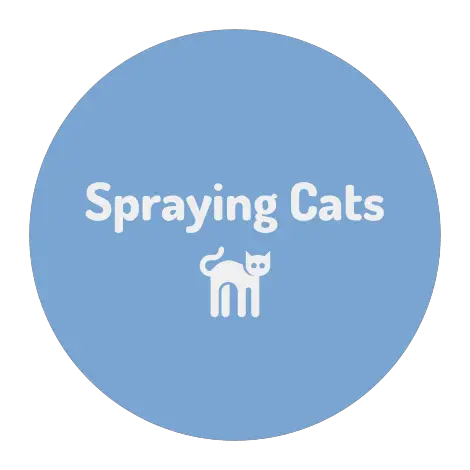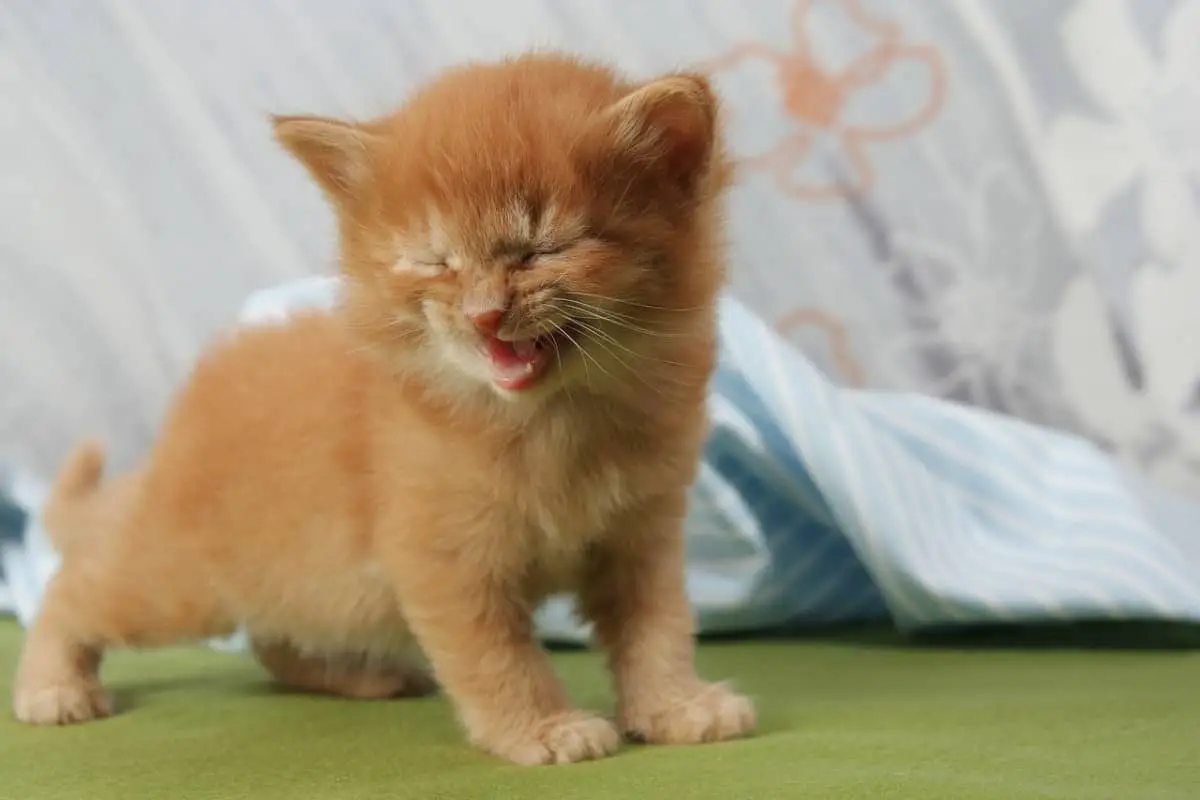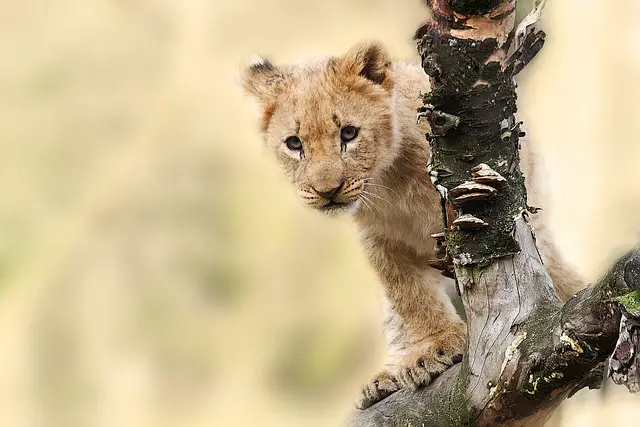Cats are known for their unique personalities and behaviors; their meows are no exception.
While many people may think that all cat meows are the same, there are actually a variety of different sounds that cats use to communicate with their owners and other cats.
Understanding these different meows can help cat owners better understand their furry friends and build stronger bonds with them.
One of the most common types of cat meows is the standard meow, which is used for a variety of purposes.
Cats may use this meow to greet their owners, ask for food or attention, or say hello. Another type of meow is the chirp, which is often used by mother cats to communicate with their kittens.
This high-pitched sound can also indicate excitement or anticipation and may be used by cats when they see birds or other prey.
Other cat meows include the trill, which is a combination of a meow and a purr and is often used by cats to greet their owners or express happiness.
The yowl is another type of meow often used by cats in distress, such as when in pain or feeling anxious.
By understanding the different types of cat meows, owners can better communicate with their cats and provide them with the care and attention they need.
Understanding Cat Meows
Cats communicate through various vocalizations, and meowing is one of the most common. Understanding what your cat is trying to communicate through their meows can help you better care for them and strengthen your bond. Here are a few things to keep in mind:
- Different meows have different meanings. While some meows may sound similar, they can have vastly different meanings. For example, a short, high-pitched meow may indicate a greeting or a request for attention, while a longer, lower-pitched meow may indicate annoyance or frustration. Pay attention to the context in which your cat is meowing to help determine what they are trying to communicate.
- Meows can vary by breed and individual cat. Just like humans, cats have their unique personalities and communication styles. Some breeds, such as Siamese cats, are known for being particularly vocal. Additionally, individual cats may have their own unique meows that they use to communicate with their owners.
- Meows can change over time. As cats age, their meows may change in tone or frequency. This could be due to a variety of factors, such as changes in their health or environment. If you notice a sudden change in your cat’s meowing behavior, it may be worth a trip to the vet to rule out any underlying health issues.
- Meows are just one aspect of cat communication. While meows are essential to how cats communicate, they are not the only way. Cats also communicate through body language, such as tail position and ear position, as well as through scent marking and other behaviors. Paying attention to your cat’s overall behavior and body language can help you better understand their message.
By understanding your cat’s meows and other forms of communication, you can build a stronger bond with your feline friend and provide them with the care and attention they need.
Different Types of Cat Meows
Cats are known for their unique vocalizations, and meowing is one of the most common ways they communicate with their owners.
However, not all meows are created equal. Cats use some types of meows to convey their feelings and needs.
Hunger Meows
Hunger meows are probably the most recognizable type of meow. These meows are urgent and persistent, often accompanied by rubbing against their owner’s legs or jumping up on counters to get attention.
If your cat is meowing excessively for food, it might be time to adjust their feeding schedule or try a different type of food.
Attention-Seeking Meows
Cats are notorious attention-seekers, often using meows to get their owners’ attention. These meows are usually more high-pitched and insistent than hunger meows, and they may be accompanied by pawing at their owner’s leg or jumping up on their lap.
If your cat is meowing for attention, try giving them some extra playtime or cuddles to satisfy their need for affection.
Greeting Meows
When they come home, many cats will greet their owners with a soft, chirping meow. These meows are usually accompanied by purring and rubbing against their owner’s legs, and they’re a sign that your cat is happy to see you.
If your cat greets you with a meow, be sure to give them some attention and affection to reinforce their positive behavior.
Angry Meows
When cats feel upset or threatened, they may use an angry meow to communicate their displeasure. These meows are usually low-pitched and accompanied by hissing or growling, and they’re a warning that your cat is feeling defensive.
If your cat is meowing angrily, give them some space and try to identify the source of their stress.
Fearful Meows
Finally, cats may use meows to communicate fear or anxiety. These meows are usually high-pitched and accompanied by hiding or cowering behavior, and they’re a sign that your cat is feeling scared.
If your cat is meowing fearfully, try to identify the source of their anxiety and provide them with a safe, comforting space to retreat to.
By understanding the different types of meows that cats use, you can better communicate with your feline friend and meet their needs and desires.
Interpreting Cat Meows
Cats meow for various reasons, including hunger, thirst, boredom, and attention-seeking. Understanding the different types of meows can help cat owners better communicate with their feline companions.
Volume of Meows
The volume of a cat’s meow can indicate the level of urgency or intensity of the message being conveyed. A loud, insistent meow may indicate hunger or a desire for attention, while a softer, quieter meow may indicate contentment or a request for a gentle touch.
Pitch of Meows
The pitch of a meow can also convey different messages. High-pitched meows may indicate excitement or playfulness, while lower-pitched meows may indicate frustration or discomfort.
Some cats may even use different pitches for different types of messages, making it essential to pay attention to the context of the meow.
Length of Meows
The length of a meow can also provide clues to a cat’s message. Short, sharp meows may indicate a desire for food or attention, while longer, drawn-out meows may indicate discomfort or distress. Some cats may also use a series of short meows to indicate excitement or anticipation.
Paying attention to the volume, pitch, and length of a cat’s meows can help owners better understand their feline companions and provide the care and attention they need.
Responding to Different Cat Meows
Positive Reinforcement
When a cat meows in a desirable way to the owner, such as a friendly greeting or a request for food, it is essential to respond with positive reinforcement.
This can include verbal praise, petting, or treating the cat. By rewarding the cat for their desired behavior, they are more likely to repeat it in the future.
Ignoring Unwanted Meows
On the other hand, when a cat meows in an unwanted way, such as excessively meowing for attention or meowing during the night, it is essential to ignore the behavior.
Responding to unwanted meows can reinforce the behavior and encourage the cat to continue. It is essential to remain consistent and not give in to the cat’s demands, as this can lead to further unwanted behavior.
To discourage unwanted meows, providing the cat with plenty of attention, playtime, and mental stimulation throughout the day is essential.
This can help prevent boredom and reduce the likelihood of excessive meowing. Additionally, providing the cat with a comfortable sleeping area away from the owner’s bedroom can help reduce nighttime meowing.
Overall, responding to different cat meows requires a consistent approach that focuses on positive reinforcement for desired behavior and ignoring unwanted behavior.
Owners can help prevent excessive meowing and encourage positive interactions with their feline companions by providing the cat with plenty of attention and mental stimulation.
Health Concerns Related to Cat Meows
Excessive Meowing
Excessive meowing can be a cause for concern in cats. If a cat suddenly starts meowing excessively, it could indicate an underlying health issue. Some possible causes of excessive meowing in cats include:
- Hyperthyroidism: This condition causes the thyroid gland to produce too much thyroid hormone. Symptoms of hyperthyroidism include weight loss, increased appetite, and excessive meowing.
- Cognitive Dysfunction: This is a condition similar to Alzheimer’s disease in humans. Symptoms of cognitive dysfunction in cats include confusion, disorientation, and excessive meowing.
- Pain: Cats may meow excessively if they are in pain. This could be due to various reasons, such as arthritis or dental problems.
If a cat is meowing excessively, it is essential to take them to a veterinarian to rule out any underlying health issues.
Changes in Meow Patterns
Changes in a cat’s meow patterns can also cause concern. If a cat’s meow suddenly changes, it could indicate an underlying health issue. Some possible causes of changes in meow patterns in cats include:
- Upper Respiratory Infections: Upper respiratory infections can cause a cat’s meow to become hoarse or change in pitch.
- Oral Pain: Cats may meow differently if they are experiencing oral pain. This could be due to dental problems or other issues.
- Hearing Loss: Cats may meow louder or more frequently if they are experiencing hearing loss.
If a cat’s meow pattern changes, it is essential to take them to a veterinarian to rule out any underlying health issues.
Conclusion
In conclusion, cats communicate through various meows, each with its unique meaning. Cat owners can better understand their pets’ needs and emotions by understanding their meows.
Some common meows include the greeting meow, the demand meow, and the attention meow. The greeting meow is a friendly and welcoming sound, while the demand meow is more insistent and often used to request food or attention. The attention meow is a softer sound cats use to get their owner’s attention without demanding it.
Other meows include the yowl, which often indicates pain or discomfort, and the chatter, which cats use when they see prey. Cats also use purring to communicate, indicating contentment and relaxation.
It’s important to note that while cats use meows to communicate, they also use body language and other vocalizations, such as hissing and growling. Therefore, it’s essential to consider all forms of communication when interpreting a cat’s behavior.
Overall, understanding cat meows can deepen the bond between cats and their owners and lead to a happier and healthier relationship.
[su_box title=”Affiliate Disclosure”]This website is supported by its readers. Please assume that all links are affiliate links. If you make a purchase from one of the links we will make a commission from Amazon. Thank you.[/su_box]




